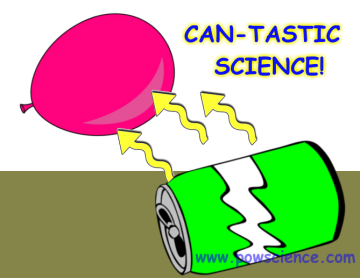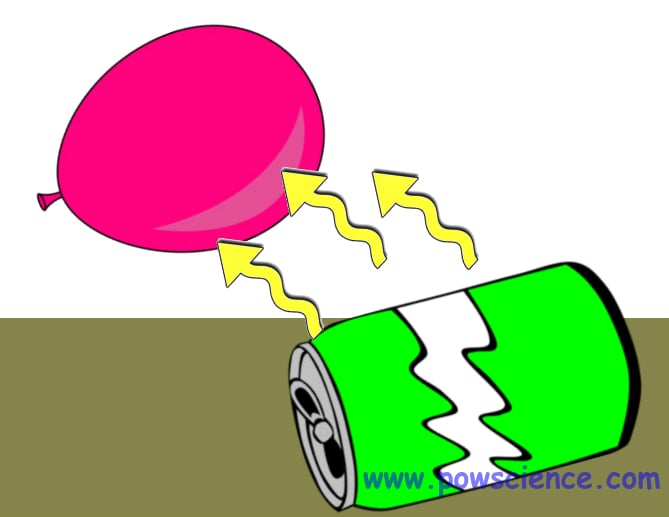Can-Tastic (Static Electricity)
- Posted on
- By Eric and Hema Bulmer
- Posted in electricity, static, video

It's another fun, easy-to-set-up Science Experiment for Kids from Pow! Science! Here's a very cool way to explore and learn about static electricity in a way that you probably haven't tried before.
Can-Tastic!
An Experiment in Static Electricity
Hey Nerd! It's another fun, easy-to-set-up Science Experiment for Kids from Pow!Science! Here's a very cool way to explore and learn about static electricity in a way that you probably haven't tried before. Best of all, the materials list is super-short, making this an ideal elementary science experiment for your classroom or home school group.
Materials
- Empty Aluminum Can (12 oz or close to it)
- Balloon (check for latex allergies!)
- Smooth Flat surface (like a table for the floor)
Step by Step

1. Blow up the balloon and tie it closed.
2. Lay the empty can on its side on your flat work surface. Make sure it's not rolling.
3. Rub the balloon on your hair to "charge it up." SLOWLY bring the balloon closer and closer to the can WITHOUT TOUCHING the can!
With just a little bit of practice, you'll be able to get the can to roll towards the balloon and right across the table or floor. WOW!!
What's Going On?
All matter is made of atoms. All atoms have electrons surrounding them. Thus, there are electrons on the surface of the balloon and on the empty can. Electrons have a NEGATIVE charge. When you rub the balloon on your head, you're adding a tremendously huge number of electrons (from your hair) to the surface of the balloon. This makes the surface of the balloon SUPER NEGATIVE. The surface of the can is only "normal" negative.
So you've got the SUPER NEGATIVE surface of the balloon attracting the merely "normal" negative surface of the can. Usually we say "opposite charges attract." Although the balloon and the can aren't, strictly speaking, opposites, they're "opposite enough" for an attraction to happen!
Things to Talk About
Do only opposite charges attract, or will charges that are simply VERY DIFFERENT from each other attract as well? Will a slightly negative charge be attracted to a REALLY REALLY negative charge?
Extensions
Have you ever tried sticking a balloon to the wall using a procedure similar to this one? Can you explain how that works now? Why does the balloon stick to the wall only after you rub it on your head? What other objects will a "charged up" balloon attract? Try it!
© Hema and Eric Bulmer. All rights reserved.
